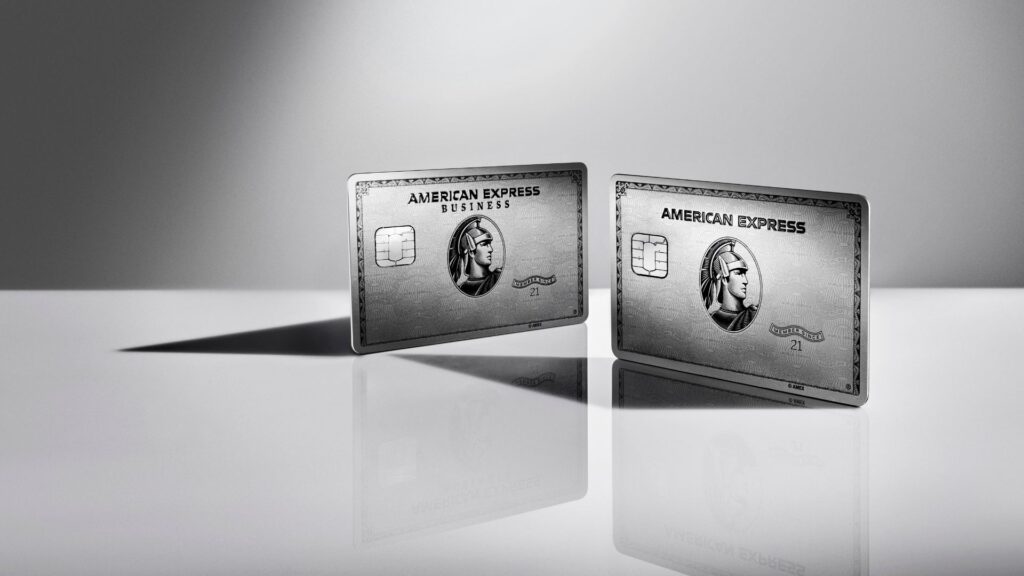Table of Contents
What Is an American Express Card?

An American Express card, commonly referred to as an “Amex” card, is a branded electronic payment card issued and processed by the publicly traded financial services corporation American Express (ticker symbol: AXP). Unlike many other major payment networks, American Express operates uniquely as both the card issuer and the payment network processor. This integrated model distinguishes Amex from competitors like Visa and Mastercard, which primarily provide the processing networks used by banks that actually issue the cards bearing their brands. American Express offers a range of card products tailored to different needs, including charge cards (requiring full balance payment each month), traditional credit cards (allowing revolving balances), and prepaid cards. These cards are available to consumers across the spectrum, from individual cardmembers and small businesses to large corporate clients, both within the United States and internationally. A significant draw of American Express cards is the suite of valuable perks and benefits they frequently offer. These can encompass robust rewards programs (earning points or miles redeemable for travel, merchandise, or statement credits), cash back options on purchases, and extensive travel-related benefits such as airport lounge access, travel insurance, and hotel elite status. Furthermore, American Express extensively utilizes co-branding partnerships with major airlines, hotels, and retailers. Examples include cards co-branded with Delta Air Lines or Hilton Hotels, which offer accelerated rewards and specific benefits tied to those brands. In essence, an American Express card represents a payment instrument directly issued by a single, vertically integrated financial company, often accompanied by premium features, rewards structures, and co-branded options designed to provide significant value and flexibility to its diverse global customer base.
Early History of American Express
American Express was founded in 1850 as a freight forwarding company in Buffalo, New York. It emerged as a joint-stock corporation through the merger of cash-in-transit businesses owned by Henry Wells (Wells & Company), William G. Fargo (Livingston, Fargo & Company), and John Warren Butterfield (Wells, Butterfield & Company). Initially, the company established its headquarters in Manhattan’s Tribeca area, at the intersection of Jay Street and Hudson Street. For years, it held a near-monopoly on express shipments—including goods, securities, and currency—across New York State. In 1874, American Express relocated its headquarters to 65 Broadway in Manhattan’s Financial District, a site it would occupy through two subsequent buildings.
Expansion and Infrastructure
In 1854, American Express acquired property on Vesey Street in New York City for stables, supporting its freight operations. Its first dedicated New York headquarters was a marble Italianate palazzo at 55–61 Hudson Street, completed in 1858, featuring a bustling freight depot with direct rail access. By 1867, the company expanded with a stable at 4–8 Hubert Street. As business grew, American Express moved in 1874 to rented offices at 63 and 65 Broadway, two five-story brownstone buildings owned by the Harmony family.
In 1880, the company constructed a new warehouse at 46 Trinity Place, featuring a brick-arch façade reminiscent of pre-skyscraper New York. Though no longer owned by American Express, the building still bears its iconic terracotta eagle seal. Between 1890 and 1891, a ten-story building designed by Edward H. Kendall replaced the old Hudson Street headquarters. By 1903, American Express had become a financial powerhouse, with assets rivaling major banks, prompting the purchase of its Broadway properties.
A New Headquarters and Legacy
Under the leadership of George Chadbourne Taylor, who became president in 1914, American Express embarked on constructing a new headquarters. The outdated Broadway buildings, described by The New York Times as “ancient landmarks,” were no longer suitable for the growing company. Despite delays caused by World War I, the 21-story neoclassical American Express Co. Building was completed in 1917 at 65 Broadway, designed by James L. Aspinwall of Renwick, Aspinwall & Tucker. This building solidified the company’s presence in Manhattan’s “Express Row” and contributed to the iconic streetscape of lower Broadway.
American Express sold the building in 1975 but maintained travel services there. Over the years, the landmark housed other notable firms, including J. & W. Seligman & Co., the American Bureau of Shipping, and later Standard & Poor’s, which renamed the building after itself. Today, the structure stands as a testament to American Express’s early dominance in freight and financial services.
Understanding American Express Cards & Business Model
American Express (Amex) operates a distinct and vertically integrated business model within the global payments industry. Unlike major competitors Visa (V) and Mastercard (MA), which primarily provide the underlying transaction processing networks used by bank issuers, American Express uniquely serves as both the card issuer and the network processor. This means Amex directly issues its branded payment cards – including both traditional credit cards (allowing revolving balances) and charge cards (requiring full payment monthly) – to consumers, small businesses, and corporations worldwide, while also operating its proprietary American Express network to authorize, clear, and settle those transactions. This dual role as lender and network operator is a key differentiator. As a publicly traded financial services company, Amex generates revenue through a dual-stream approach: interest income and fees from its lending products (credit cards), and discount fees (also known as interchange or merchant fees) collected from businesses for processing transactions across its network. This multi-product capability broadens its competitive field. While it competes with Visa and Mastercard for network processing volume, it also contends with traditional banks and lenders in the credit card issuance space. Its most directly comparable competitor is Discover Financial Services (DFS), which similarly combines card issuing (credit cards primarily) with its own proprietary payment network (PULSE/Diners Club). The ability to both lend and process transactions allows Amex to capture value across the payment ecosystem, leveraging its closed-loop network data for customer insights and risk management, while offering integrated services to both cardmembers and merchants. This integrated structure fundamentally shapes its competitive strategy and revenue generation in the financial services sector.³
Understanding American Express Fees & Transaction Processing
A cornerstone of American Express’s (Amex) revenue model stems from the transaction processing fees it charges merchants. While these fees are often cited as potentially higher than those of some competitors, a significant portion of merchants globally willingly accept American Express cards and pay the associated costs. This willingness is primarily driven by the distinct value proposition Amex cardmembers represent – they typically demonstrate higher average spending and greater loyalty, translating into increased sales volume for merchants who cater to this desirable customer segment.⁵ The transaction process itself highlights Amex’s unique integrated structure. When a customer uses an Amex card, the merchant’s acquiring bank communicates directly with American Express. Crucially, Amex acts as both the payment processor (network) and the card issuer in this single interaction. The acquiring bank must route the transaction authorization request through the proprietary American Express network. Simultaneously, because Amex issued the card, it is also the entity responsible for authenticating the cardholder, verifying available credit or charge capacity, and ultimately approving or declining the transaction.⁶ This consolidation of roles simplifies the backend process compared to networks like Visa or Mastercard, where issuing banks and the network are separate entities. The fee paid by the merchant to American Express for this service, often called the “discount fee,” encompasses compensation for both the network processing services (authorization, clearing, settlement, security) and the lending/credit risk assumed by Amex as the issuer. This fee is a component of the overall “merchant discount rate” negotiated with the acquiring bank. By excelling in both high-quality lending/customer service and efficient, secure network processing, American Express has cultivated a strong reputation and premium brand within the financial services industry, justifying its fee structure to a vast network of merchants seeking access to its valuable cardmember base.⁵
Types and Features of American Express Cards
American Express offers a diverse portfolio of payment cards catering to both retail and commercial clients, primarily structured around charge cards, credit cards, and prepaid debit cards. As an industry leader, Amex is particularly renowned for its charge cards (like the Green, Gold, and Platinum cards), which provide month-to-month credit without a preset spending limit but require the full balance to be paid each billing cycle. It also issues traditional credit cards (such as the Blue Cash Preferred® Card) that permit revolving balances with interest, alongside various prepaid debit cards, often branded as gift cards or reloadable special-purpose payment instruments.¹¹ Underwriting standards prioritize credit quality, typically targeting borrowers with good-to-excellent credit scores (generally 670 or higher), positioning Amex outside the subprime lending market.⁷ Card benefits are closely tied to annual fees and vary significantly. Entry-level no-annual-fee cards provide basic rewards, while premium cards deliver substantial value through robust rewards points programs, travel perks (like lounge access, airline fee credits, hotel status), and limited cash back options (though Amex isn’t typically ranked among the top providers for pure cash back).⁸,⁹ Annual fees exemplify this tiered approach: $95 (Blue Cash Preferred®), $99 (Delta SkyMiles® Gold), $150 (Green Card®), $250 (Gold Card®), and $550 (Platinum Card®).¹⁰ The Green, Gold, and Platinum charge cards feature no preset spending limits, enhancing flexibility for qualified cardmembers.¹¹ While many fees are substantial, Amex does offer at least six cards without an annual fee.¹² Complementing its products, American Express is consistently lauded for exceptional customer service, evidenced by its #1 ranking in J.D. Power’s 2020 U.S. Credit Card Satisfaction Study.¹³ This combination of premium card options, stringent underwriting, fee-based benefit tiers, and top-tier service defines the Amex card ecosystem.
American Express Partnerships and Co-Branded Cards (Updated July 2025)
American Express (Amex) issues cards directly but also partners with financial institutions and brands worldwide. In the U.S., Wells Fargo previously issued Amex cards (applications paused in 2021, though existing cardholders remain unaffected), while Banco Santander offers Amex cards in Mexico 414. Amex’s co-branded cards, such as those with Delta Air Lines and Hilton Hotels, allow users to earn airline miles or hotel points, enhancing loyalty program benefits 211. These partnerships expand Amex’s reach and cater to niche markets, from travel enthusiasts to business travelers.
Pros and Cons of American Express Cards (2025 Update)
Pros:
- No Preset Spending Limits (on Green, Gold, and Platinum charge cards), offering flexibility for high spenders 15.
- Top-Tier Customer Service – Amex consistently ranks #1 in satisfaction (e.g., J.D. Power’s 2025 U.S. Credit Card Study) 15.
- Premium Rewards & Perks – Includes travel credits (e.g., $200 annual dining credit on Platinum Cards), lounge access, and bonus points on dining/travel 213.
- Debt Management – Charge cards require full monthly payments, discouraging high-interest debt 15.
Cons:
- Limited Merchant Acceptance – Higher transaction fees lead some small businesses to reject Amex 15.
- Strict Credit Requirements – Requires good-to-excellent credit (670+ FICO) 15.
- High Annual Fees – Ranging from $150 (Green Card) to $799 (Platinum Card in Canada) 213.
- No Revolving Credit – Charge cards don’t allow carried balances, limiting short-term borrowing 15.
Amex remains a leader in premium cards, but its suitability depends on spending habits and creditworthiness. For frequent travelers or high spenders, the rewards often justify the costs, while budget-conscious users may prefer no-fee alternatives 15.
